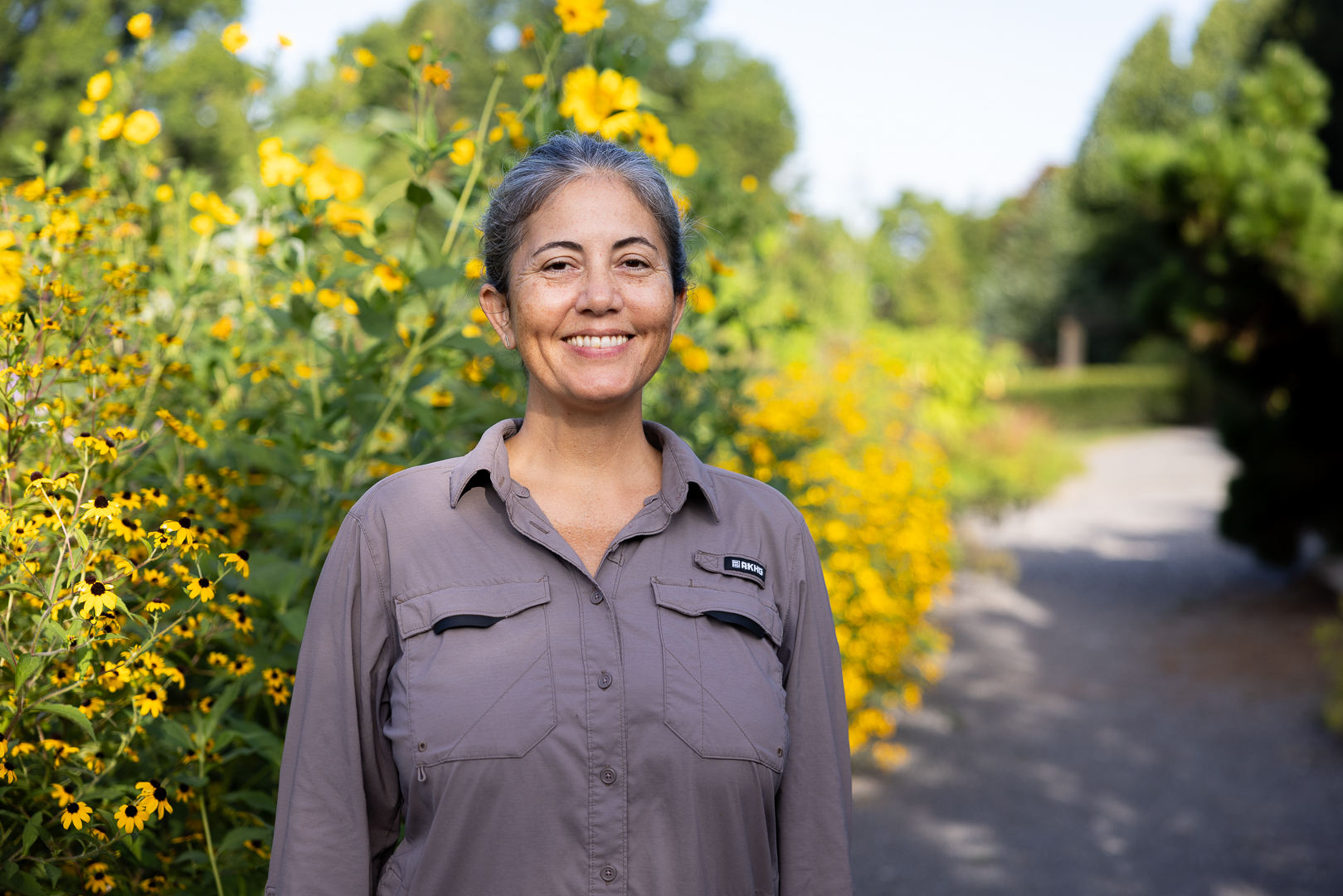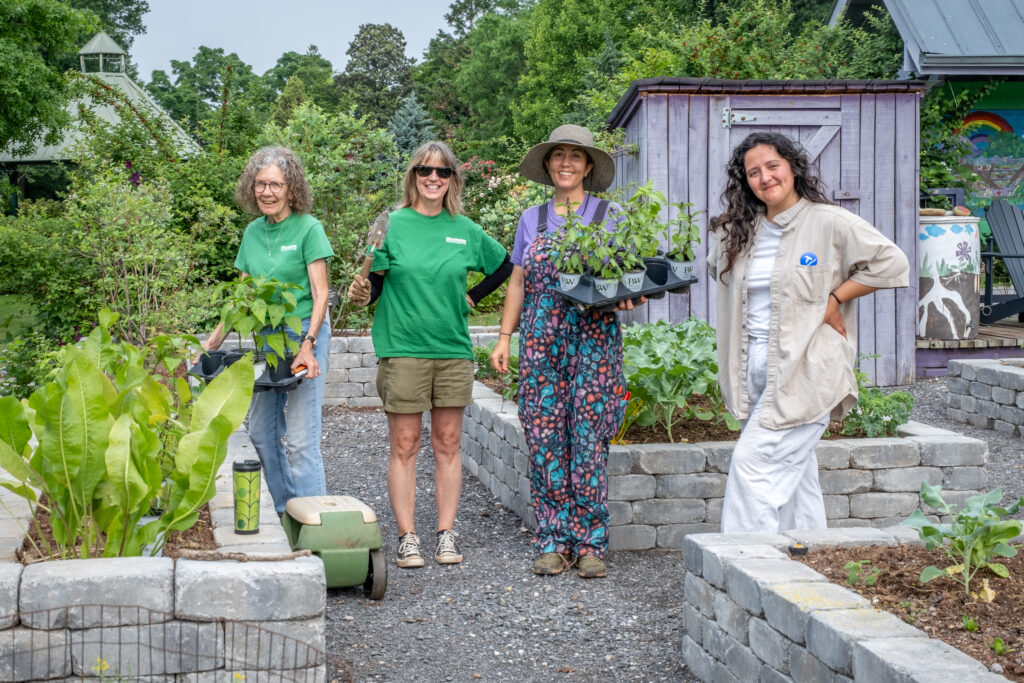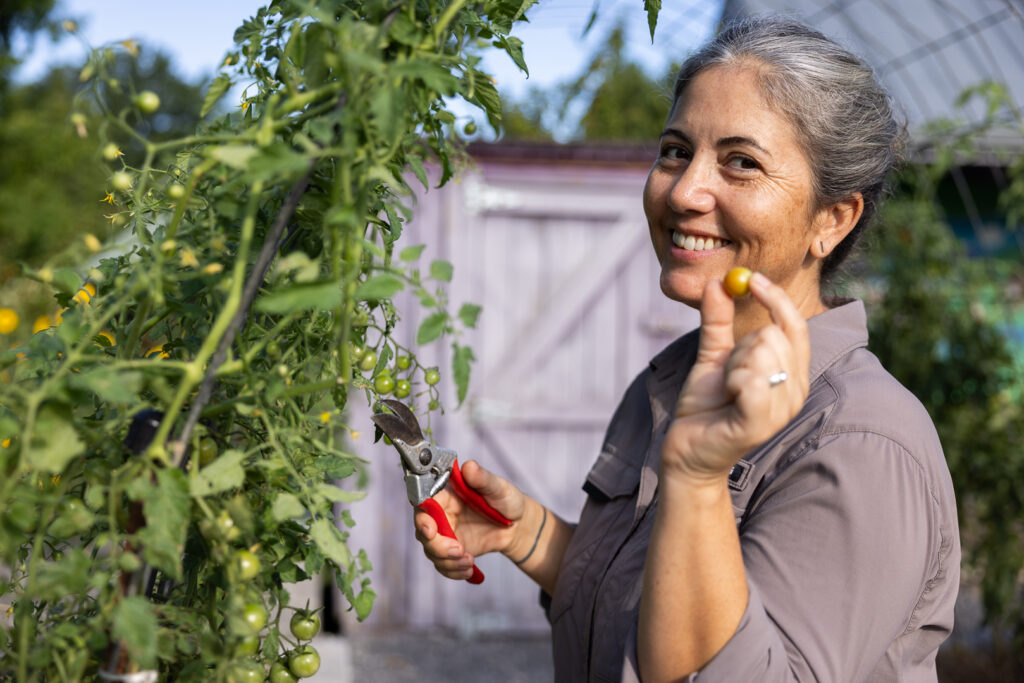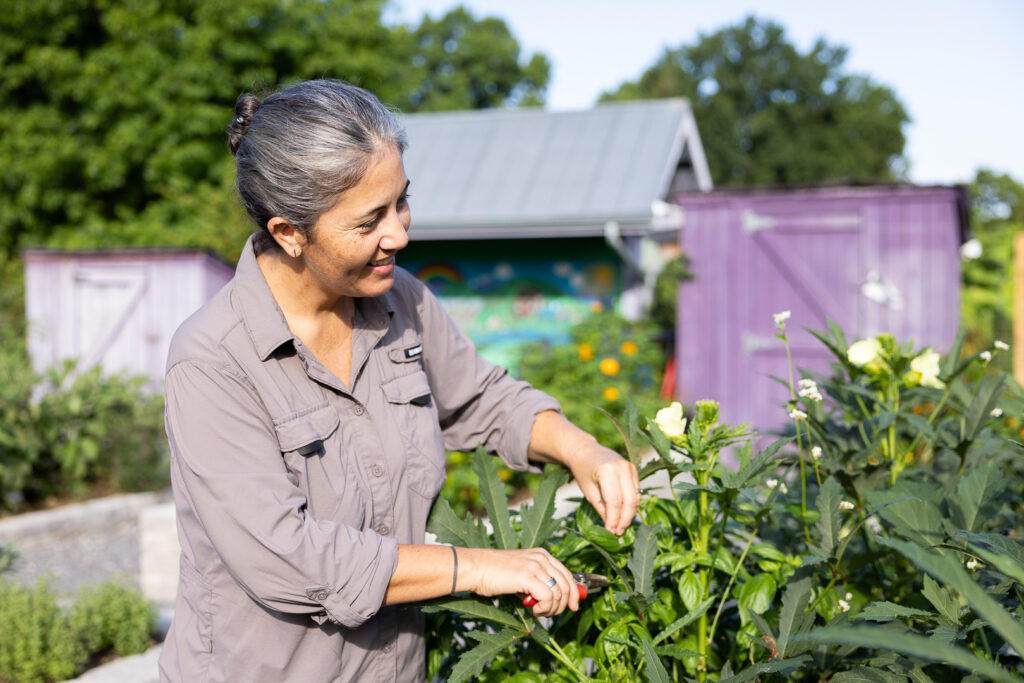
Horticulturalist cultivates spaces for people to connect with nature at UT Gardens, Knoxville
Where are you from, and how did your career lead you to UTIA?
I was born and raised in East Tennessee. I enrolled at Pellissippi State straight out of high school and was undecided on a major. I took some time off to travel and ended up working on a residential gardening crew in the San Juan Islands in Washington state. I found a deep sense of peace and satisfaction working outside in the beauty of nature surrounded by plants and so I decided to pursue a degree in horticulture to deepen my knowledge and expand my opportunities. I returned to Tennessee, completed an AA in Liberal Arts at Pellissippi State in 2002 and transferred to UTIA where I earned a Bachelor of Science with a focus in Public Horticulture. In my senior year at UT, I was fortunate to be hired as a student intern at UT Gardens. That experience introduced me to the joy and fulfillment of working in a public garden setting and gave me invaluable hands-on experience. After college I moved to California where I worked at the Santa Barbara Botanic Garden and for an environmental restoration group called Growing Solutions. Then I moved to Hawaii where I lived for five years working at a lettuce farm and as a freelance gardener for private estates on the island of Maui. I moved back to Tennessee in 2011 to be closer to family and discovered that UT Gardens, Knoxville, was hiring a Kitchen Garden Manager. I was offered a part time seasonal position which I gladly accepted. That job evolved into my current full-time position.
What is your role at UT Gardens, Knoxville, and what do you do on a typical day?
My title is Horticulturist and Social Media Coordinator. One of my favorite things about working for the UT Gardens is the variety of work that I get to do. I generally begin my day out in the garden working on horticulture tasks like weeding, pruning and general plant care. During this time, I am often helping to direct our student gardeners and interns, working with garden volunteers, taking photographs for social media and other outlets, answering guest questions, and making notes on future garden related priorities and goals. Social media coordination is a daily task too which involves content creation and collecting stories and information from the staff to share with our audience.

What drew you to the field of horticulture?
I was taught to have an awareness of nature from a young age. My early childhood was spent on our family homestead in Del Rio surrounded by the Cherokee National Forest. I was homeschooled until third grade and spent a lot of time playing in the woods near my house. Both my parents were big gardeners, and they shared their passion with me by teaching me the names of plants and how to interact with them. I struggled with addiction, depression and anxiety in my teens and twenties and when I rediscovered my connection to nature through gardening it gave me a sense of purpose and belonging that I had been missing. Horticulture became a path forward and a way for me to make a living while contributing to the world in a meaningful way.
What are some of the challenges and rewards of working in the UT Gardens?
Working with the public is both challenging and rewarding. We have tens of thousands of visitors each year and, for the most part, people are respectful and kind. But every season we have items that are stolen, plants that are trampled on and trash that is left behind. It can be disheartening, but you just have to keep focusing on the positive and educating people. One reward of providing the public with a beautiful free garden is all the positive feedback we hear. Most people love the garden and they often express how much they value and appreciate the work we do here. It’s gratifying to be part of something that brings joy and happiness to so many people.
How do you balance the aesthetic aspects of the Gardens with their educational and functional purposes?
Balancing aesthetics with education and function is a major goal for the whole garden. From reshaping the rectilinear bed edges of our annual trial beds to graceful curvilinear forms to raising money for operations through our annual educational nature-based community art project, we are always finding creative ways to teach people about the value of plants and nature. The inspiration for our vegetable garden came from the French potager style which mixes vegetables with flowers, herbs and fruit to create gardens that are as beautiful as they are bountiful. This method of gardening not only looks pretty but it can be quite effective for supporting biodiversity which allows us to minimize chemical inputs and manual labor.
What are some of your favorite plants or flowers to grow?
That’s a tough question because I have so many! I gravitate towards plants and flowers that perform well, stand up to the elements, don’t cause harm to the local ecosystem, and have a long season of interest. A few of my favorite trees are White oaks, Bigleaf magnolias, and Red buckeye. For shrubs I’m especially fond of Virginia sweetspire, Lacecap and Oakleaf hydrangeas, Blueberry and Elderberry. I love the scent of Gardenias and I adore all flowers for the beauty and function they provide. There is also a special place in my heart for ferns and moss.
Can you talk about the importance of connecting people with nature for their health and wellness?
Human beings are part of nature. We evolved within nature. Without plants we would not have air to breathe or food to eat. It makes perfect sense to me that we benefit from exposure to the very thing that sustains us. And now there are many scientific studies to prove it. Unfortunately, there are barriers for many people to access high quality natural environments. These obstacles can be due to things that are out of our control like being born into poverty or self-made habits that we develop through life in the modern world. Public gardens are an important resource to help people access the beauty of nature. Especially gardens like ours, which are completely free to visit.

Can you share a memorable story or feedback from a visitor to the Gardens?
A recent visitor left this review on Google: “The fact that this place is free it’s crazy! I love this garden! You can feel the love of the people who care for it. It shows in how gorgeous and magical the whole place looks. If it wasn’t for the high school prom kids who were taking pictures everywhere, I would have had the best time. Seriously magical. Maybe I’ll try a random Tuesday in the middle of the day or the summer.”
What is a project you are currently working on that you are excited about?
I’m especially interested in ecological garden design and climate resilient gardening. I recently designed a five thousand square foot meadow style garden with a high percentage of native species surrounding our grand lawn. Some of my goals with this installation were to minimize inputs like fertilizer, water and herbicides, lower the amount of manual labor, and to create year-round interest and pollinator habitat.

The garden is now in its second year and I have the opportunity to manage its care. I’m learning what worked with my original design and what did not. Some plants did not survive, some color combinations are not harmonious, some plants turned out to be more aggressive or taller than I anticipated. I’m also getting to know the organisms that rely on the habitat we have created. Birds, butterflies, bees and turtles to name a few. It’s exciting to see this section of the garden become more dynamic and diverse while still providing beauty and interest for the passive observer.
What do you like to do outside of work and/or what is a fun fact about yourself that your colleagues may not know?
I started whittling this summer. I’m about halfway done with my first spoon.
